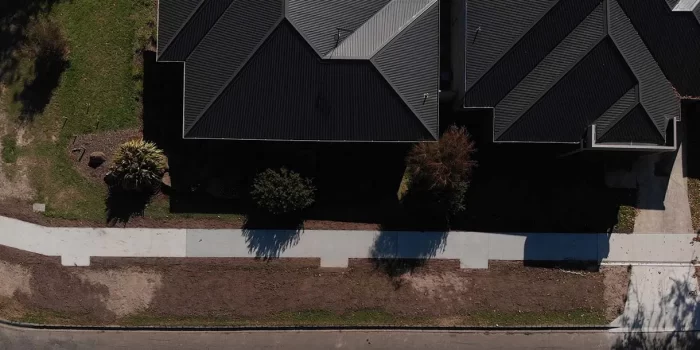Researchers from the Macedon Ranges Shire Council in Australia and RMIT University have collaborated to construct a walkway made of coffee concrete, a first for the world. Even though the smell of a hot cup of coffee won’t welcome you as you walk, this creative effort is a big step in the direction of environmentally responsible building.
An astounding 75 million kg of spent coffee grounds are produced in Australia each year, the majority of which are disposed of in landfills. A large amount of greenhouse gas emissions are caused by landfills and other organic waste sources. At RMIT, Dr. Rajeev Roychand and his colleagues recognized a chance to turn this garbage into an important resource.
You cannot simply add regular coffee grinds to concrete since they will break down and undermine the structure. Biochar is the answer. The process of heating organic materials, such as coffee grounds, in an oxygen-free atmosphere produces biochar, a substance that resembles charcoal. This procedure not only increases the waste’s longevity but also qualifies it for use in concrete.
A similar process was used for wood chips, another abundant source of landfill waste. The resulting biochar replaced a portion of the river sand typically used in concrete. The first coffee concrete footpaths were then laid in Gisborne, Australia. “Sand is becoming increasingly scarce,” explains Dr. Roychand. “This project demonstrates that coffee waste, being denser, can replace up to 15% of the sand in concrete.” On a global scale, this translates to potentially replacing nearly 90 billion kilograms of river sand with used coffee grounds!

“We’re taking these experiments from the lab to the real world,” said Shane Walden, Director of Assets and Operations at the Macedon Ranges Shire Council. “People will be walking on this concrete, and researchers will monitor its performance.”
The use of biochar offers a double benefit: a greener planet and potentially lower construction costs. “Our research indicates that coffee concrete might even allow us to use less cement,” adds Dr. Roychand. “With a 30% increase in strength, we could potentially reduce cement content by 10%.”
While the initial footpaths haven’t reduced cement usage yet, researchers are actively working towards that goal. The challenges lie in ensuring consistent biochar properties, as factors like carbon content and particle size can vary. However, these variations can also hold the key to further improvements in concrete strength.
“We’re working on creating a reliable supply chain to make this a mainstream product,” concludes Dr. Roychand. So, the next time you enjoy a cup of coffee, remember – the grounds might just end up under your feet, helping to build a more sustainable future.


